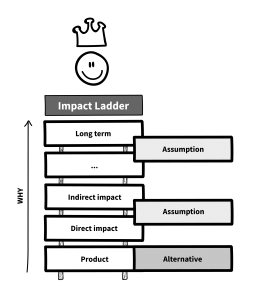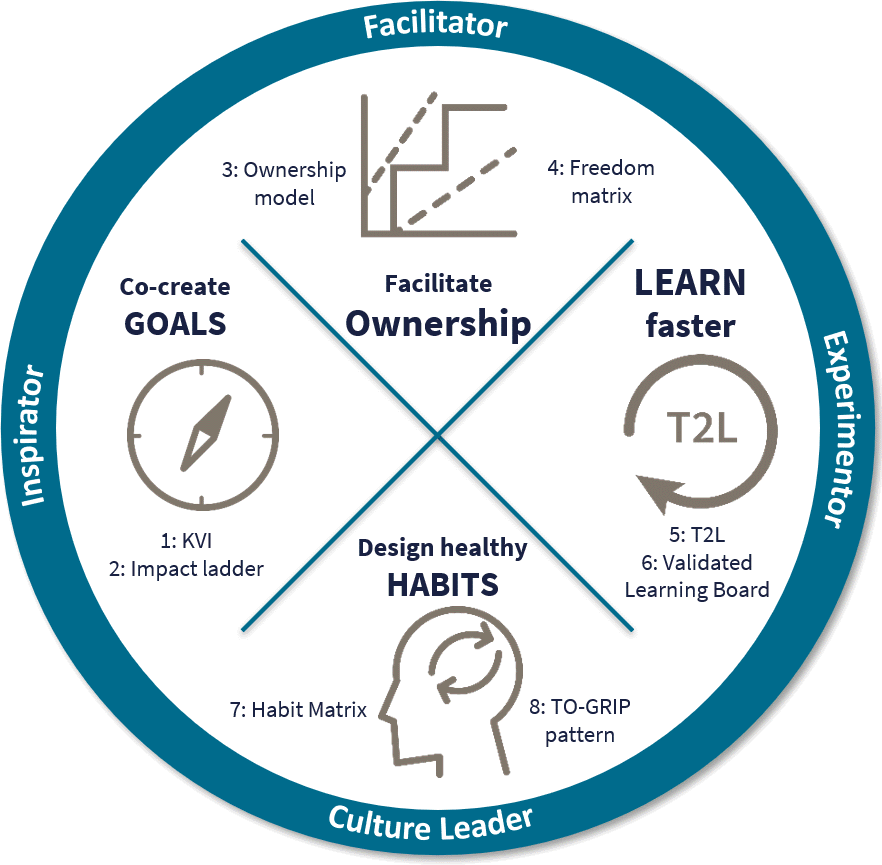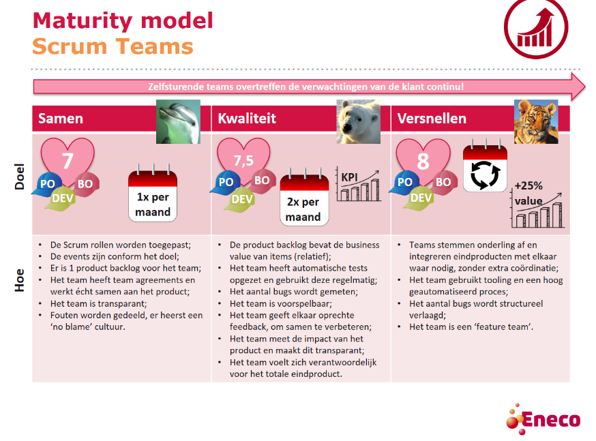×![]()
Wat is een Impact ladder?
De Impactladder is een hulpmiddel om heel duidelijk te maken hoe een product of dienst bijdraagt aan een positieve impact voor de klant. Deze krachtige tool ondersteunt agile leiders om de klantwaarde te communiceren. Het ondersteunt ook brainstormen over nieuwe producten, diensten en functies. Vervolgens geeft het inzicht in de belangrijkste risico's en aannames. De tool kan worden gebruikt voor nieuwe en bestaande producten en diensten.Why this tool?
This tool helps to visualize the relation between the product features and the benefits of the user. The user doesn't use the product because it has such nice features, it uses the product (or service) because it solves a need. It meets a certain pain or passion. The Impact Ladder visualizes this relation. Take for example a basic drill boor. You know, the tool to make holes in a wall. The company that sells the drill boor, basically sells holes or even a tool to improve your house. This is just an example.

As an agile leader, it's important to clarify why something is needed. Asking the team to solve the challenge in stead of asking a team to build a solution is a crucial nuance. You want to team to come with solutions so the customers can create better holes (or any other benefit of the product), not (necessarily) that the improve the torque. The Impact Ladder helps Agile Leaders to communicate the why behind a request in perspective of the customer.
Benefits of the tool
This tool helps in several ways:- Clearly communicate the 'why' and 'what' so that the team can implement and decide on the 'how'.
- Visualize assumptions. Like: we assume that by increasing the torque of our drill boor, more people will buy the product'. How can we validate that? This assumption is than put on the Impact Ladder between Drill Boor and Holes (we assume that an improved drill boor will be used for more holes).
- Improve the customer focus. The teams are less likely to focus on the detailed requirements (like improving the torque) and more on how the customers may benefit from it (the customer value).
- Focus on learning and not on perfection. Because this tool visualizes the relations between features and customer benefits, the teams are more likely to build small improvements and learn from it, than to spent weeks (or months) on the perfect solution.
Detailed tips on how to use it

When working on a new product or product feature, this tool can be used during refinement.
- Use an online (or physical) whiteboard.
- Put the new product feature or idea on a sticky.
- Draw the customer on the top of the board. (preferably a persona)
- Start brainstorming on this new product (feature). When you have detailed ideas on how to implement it, write it lower on the Impact Ladder.
- When you have ideas why the user should use it, but it between the user and feature.
- Create a tangible assumption on why the customer would like to have this product (feature).
The toolkit
The steering wheel of the agile leader consists of four components. Each component consists of two practical tools. So in total eight tools. The tools are explained in such a way that leaders can immediately start working on this. The tools can be used separately and as such successful. Of course, all tools together – the toolkit – reinforce each other. It concerns the following eight tools:- KVI – the Key Value Indicator (KVI) is the most important indicator for value creation for the team.
- Impact ladder – for brainstorming and visualizing the customer impact. This helps teams continuously improve their products and services.
- Ownership model – visualizes what teams need to take ownership.
- Freedom matrix – what freedoms and responsibilities does the team have at what time.
- T2L – to measure the business agility.
- Validated Learning Board (VLB) – to visually keep track of the learning process of the team.
- Habit matrix – to support culture change and the design of new habits.
- TO-GRIP – to support the agile leader in implementing major improvements.







